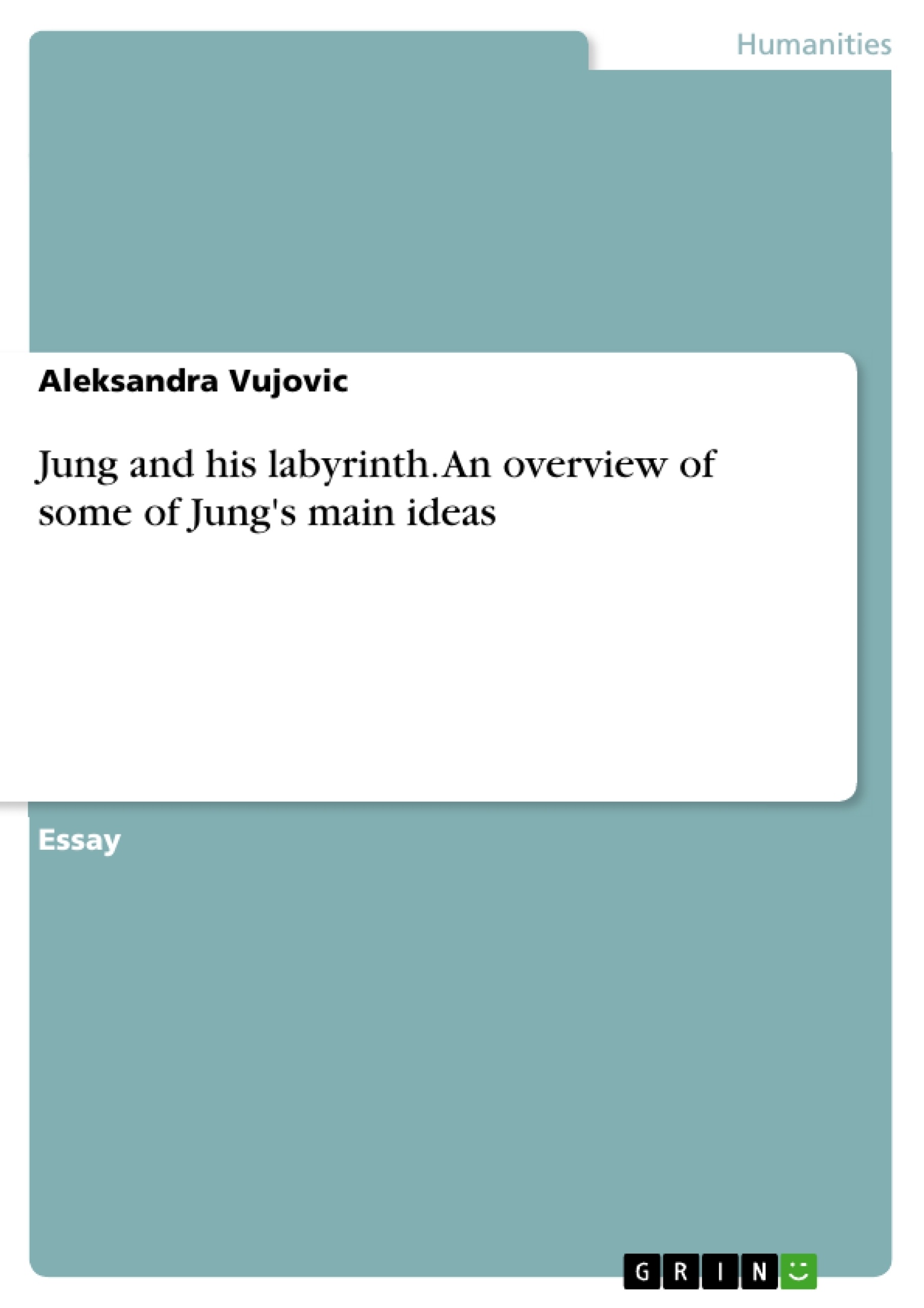This essay gives a short overview of some of Jung's main ideas. Like every true creative person, inspired and pursued by his internal daemon, Jung expressed the conclusions he reached intuitively as facts, without burdening himself with proving them in the purely scientific manner. This does not mean that he did not test them in his own life or with his patients; it just means that whether they fit into what was considered scientific was not his main concern. Such a stance, as well as his interest in what is still considered a non-scientific field of alchemy or religion, are some of the reasons he was considered by a part of the 20th century scientific community as a non-scientist, the reason why his books in the present day can be found in bookshops under Occultism, and the reason he cannot be read by the Eastern Orthodox Christians residing in monasteries.
Inhaltsverzeichnis (Table of Contents)
- Jung and his labyrinth
- The Clash of Opposing Forces
- The Darkening Spirit: Jung, spirituality, religion
- Coniunctio Oppositorum
- The Fear of Autonomous Functioning of Certain Complexes within the Psyche
- The Shadow Archetype
- The Religious Archetype
- The Importance of Dreams
- Jung's Confrontation with Christian Theology and Psychology
- The Individuation Process
Zielsetzung und Themenschwerpunkte (Objectives and Key Themes)
This text explores the life and work of Carl Jung, a prominent psychologist who developed a unique approach to understanding the human psyche. It delves into his theories and explores how they challenge traditional perspectives on religion, spirituality, and the nature of reality.
- Jung's unique approach to psychology and its departure from traditional Freudian psychoanalysis
- The role of the unconscious and archetypes in shaping human behavior and experience
- The importance of individuation and the pursuit of wholeness as a spiritual goal
- The interplay between consciousness and the unconscious, including the concepts of the Shadow and the Self
- The significance of religion and spirituality in Jung's thought and its relationship to the modern world
Zusammenfassung der Kapitel (Chapter Summaries)
- Jung and his labyrinth: This chapter introduces Jung's life and work, highlighting his emphasis on the unconscious, archetypes, and the divine in human life. It also explores the challenges he faced in integrating his ideas with traditional scientific and religious frameworks.
- The Clash of Opposing Forces: This chapter delves into Jung's exploration of the duality within the human psyche, highlighting the interplay of instincts, impulses, and spiritual dimensions. It discusses the concept of coniunctio oppositorum, which emphasizes the importance of integrating opposing forces for personal growth and development.
- The Darkening Spirit: Jung, spirituality, religion: This chapter explores Jung's views on religion and spirituality, focusing on his critique of traditional religious systems and his vision for a new understanding of the sacred. It examines his ideas about the rise of secular humanism and the need for a more integral view of reality.
- Coniunctio Oppositorum: This chapter delves deeper into the concept of coniunctio oppositorum, discussing its implications for understanding the human psyche and the process of individuation. It examines how the integration of opposites is crucial for achieving wholeness and overcoming psychological one-sidedness.
- The Fear of Autonomous Functioning of Certain Complexes within the Psyche: This chapter explores Jung's analysis of the fear of autonomous functioning of certain complexes within the psyche, drawing parallels to the concept of "loss of soul" in primitive cultures. It examines the role of participation mystique in re-establishing the unity of the psyche.
- The Shadow Archetype: This chapter focuses on the Shadow archetype, highlighting its importance in understanding the development of the individual. It explores how repressed and undeveloped aspects of the psyche can manifest as a problem for personal growth.
- The Religious Archetype: This chapter analyzes Jung's views on the religious archetype, emphasizing its universality and importance in shaping human experience. It discusses how the repression of this archetype can lead to narcissism and the inflation of unconscious contents into consciousness.
- The Importance of Dreams: This chapter explores Jung's emphasis on dreams as a pathway to understanding the unconscious and the contents of the religious archetype. It highlights the role of dreams in the process of self-discovery and self-development.
- Jung's Confrontation with Christian Theology and Psychology: This chapter examines Jung's challenges with both official Christian theology and psychology. It explores his unique perspective on the psychological reality of imaginative thinking and its role in spiritual development.
Schlüsselwörter (Keywords)
Key terms and concepts explored in this text include: unconscious, archetypes, individuation, coniunctio oppositorum, Shadow, Self, participation mystique, religious archetype, dreams, active imagination, psychological reality, spiritual development, and the interplay between religion and psychology.
- Arbeit zitieren
- Aleksandra Vujovic (Autor:in), 2014, Jung and his labyrinth. An overview of some of Jung's main ideas, München, GRIN Verlag, https://www.grin.com/document/1267419




